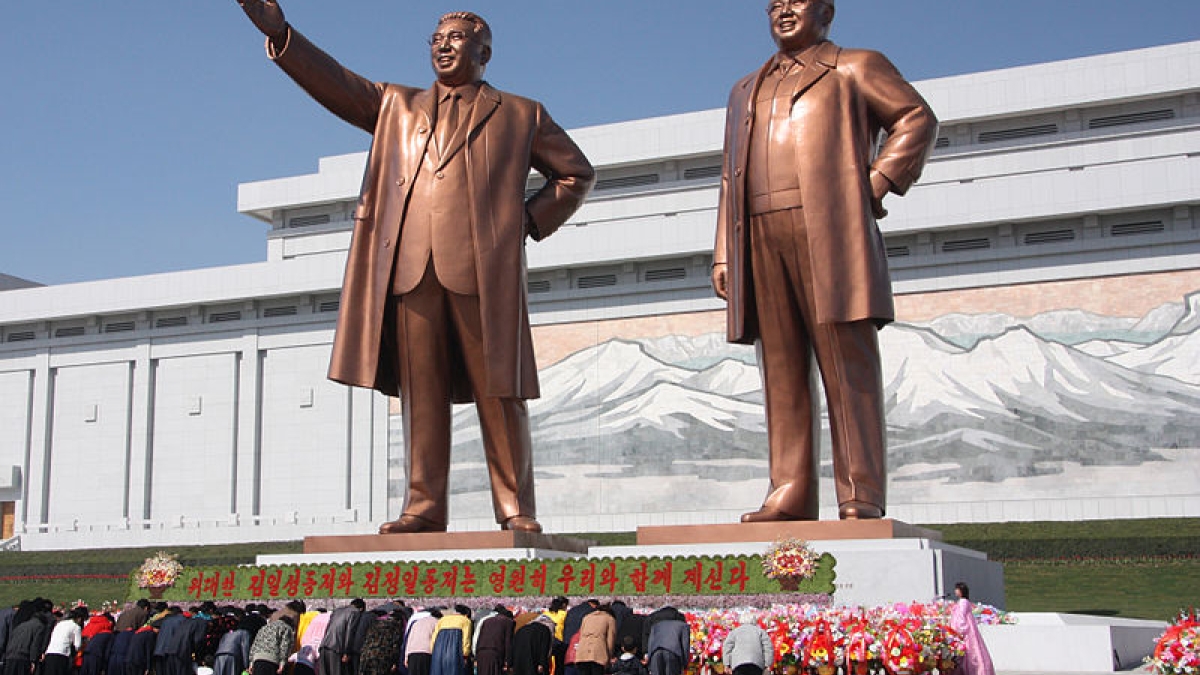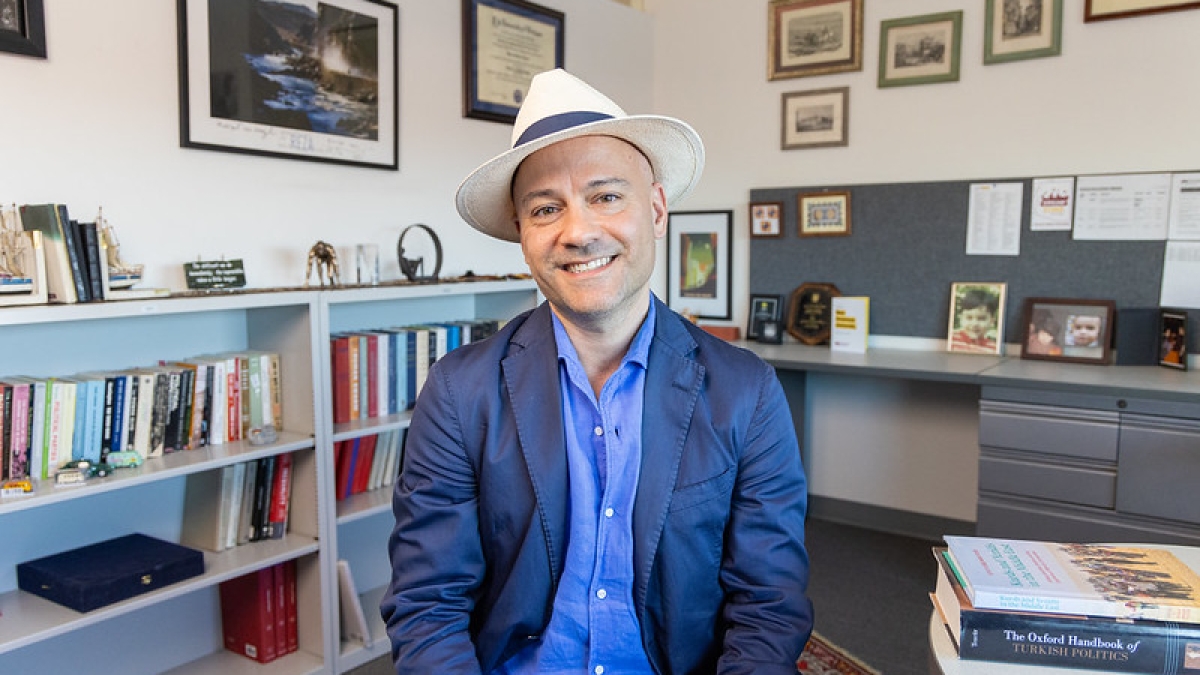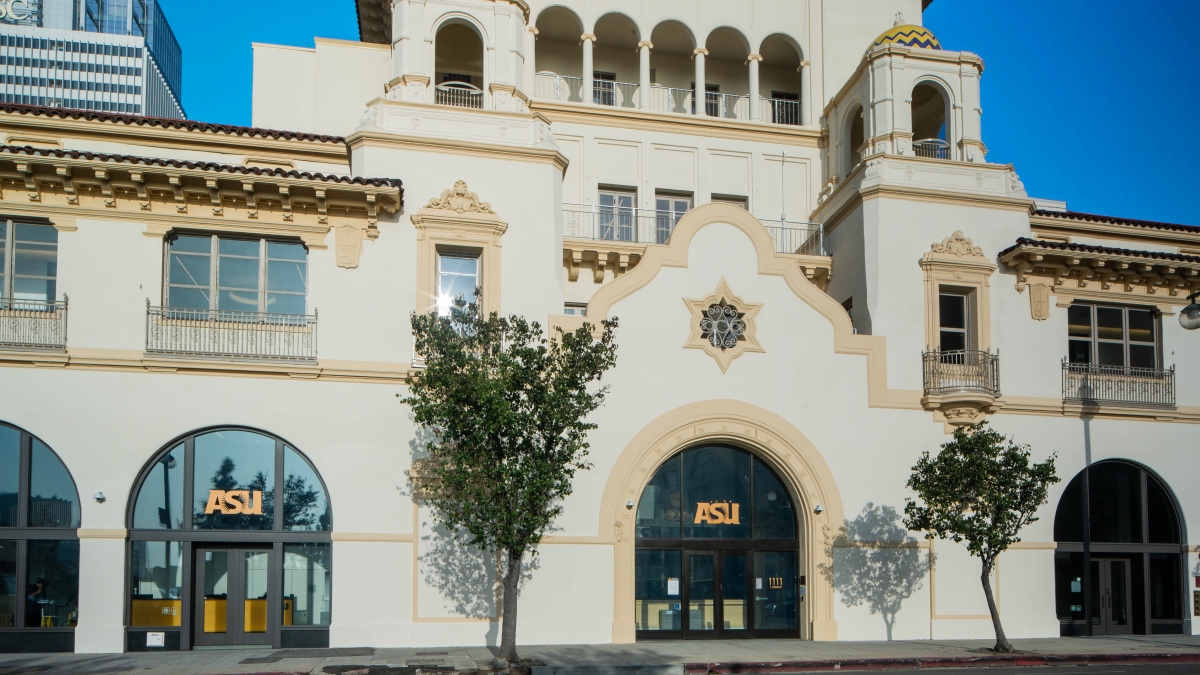Q&A: ASU fellow calls North Korean missile test 'inherently tragic'
Center on the Future of War's Silverstone explains aspects of potential US response

A recent missile launch has thrust North Korea back into the national defense conversation, sparking concerns that the test might be a frightening milestone in Pyongyang’s quest to become a fully developed nuclear power; it also should raise the question, an ASU expert on international military conflict says, of how the U.S. should respond.
The intercontinental ballistic missile, called the Hwasong-12, proved capable of reaching U.S. allies South Korea and Japan along with Guam, a U.S. territory in the western Pacific.
A U.S. missile test has been scheduled for this month at Vandenberg Air Force Base, and President Donald Trump previously has vowed to keep Kim Jong-un’s regime in check.
It’s a military tension that’s not likely to fade anytime soon, said Scott Silverstone, a former U.S. Naval officer, professor of international relations and director of the International Relations program at the United States Military Academy at West Point.Silverstone is also the author of “Stopping Hitler: the False Promise of Preventive War,” which is forthcoming later in 2017.
“We should be coming to terms with the inherently tragic nature of this problem, and the fact that there are no clear, clean solutions that will deliver a denuclearized North Korea,” said Silverstone, recently selected as an ASU Senior Future of War Fellow with the Center on the Future of War.
Founded in 2014, the center brings together ASU faculty and policy experts to explore the social, political, economic and cultural implications of the changing nature of war and conflict. The team comprises more than 100 affiliated faculty and three dozen national security experts at New America, an interdisciplinary Washington, D.C.-based think tank and civic engagement institution.
For a better understanding, ASU Now turned to Silverstone for this Q&A.
Scott Silverstone
Question: Given what we know about North Korea’s ICBM launch last week, how big a threat is it to the U.S. and its allies today?
Answer: North Korea does not yet have the technological capability to hit the continental United States with a missile, carrying either a nuclear or a conventional warhead. But we must assume that our South Korean and Japanese allies, as well as American forces on the islands of Okinawa and Guam, are within range of North Korean missiles that could carry a sufficiently miniaturized nuclear warhead.
Given the regime’s sporadic record of both success and failure as it develops and tests this technology, it is impossible to calculate the threat with precision. But making this basic assumption about North Korea’s ability to lash out at these targets should inform our approach to the broader North Korean problem.
This assessment is just a snapshot in time; the level of threat is actually in flux as North Korea continues to work toward a reliable ICBM and a nuclear warhead small enough to fit on top, and tough enough to survive re-entry into the atmosphere in the final stages of its flight toward the United States. The North Korean regime has been blunt in declaring this capability to be the ultimate goal of its nuclear program.
The question then is how should we respond to this dynamic threat, particularly in the face of such uncertainty over how far and how fast the North Koreans will progress toward this goal?
Q: How effective is our country’s missile defense system if North Korea were to launch an immediate attack?
A: This is a question that generates tremendous controversy.
The United States has invested heavily in missile defense technology over several decades, and these systems have passionate advocates in the defense community and defense industries that have had a role in the endeavor.
But the fact remains that missile defense is an unproven capability, and these systems have passionate critics as well.
The uncertainty over missile defense effectiveness means that American leaders should never enter a crisis with North Korea believing that if the crisis escalates to a missile launch we can safely shield ourselves and our allies with defensive technologies.
Deploying these systems might have a positive effect, however, if they help deter a North Korean attack, should the North’s leaders believe that an attack could be neutralized by THAAD (Terminal High Altitude Area Defense), Aegis ships, or missile defense systems based in the United States.
Q: Where is the money and expertise coming from to help guide North Korea in its quest to develop nuclear weapons?
A: North Korea’s nuclear and missile programs have benefited from decades of collaboration with countries such as the Soviet Union/Russia, Pakistan, Iran and Iraq.
Since Kim Jong-un became North Korea’s president, however, he has pushed for the development of a more independent, indigenous scientific and technological base that can survive international efforts to starve the regime of the expertise and equipment necessary to develop a robust nuclear missile capability.
Recent reports suggest that North Korea has been remarkably successful in enhancing its homegrown capabilities.
Since the mid-1990s, the United States has linked food and energy aid to a North Korean agreement to freeze its nuclear weapons work; $1.3 billion in food and energy aid flowed between 1995 and 2008.
This aid was suspended when North Korea joined the nuclear club.
Another American food aid pledge in 2012 fell through when North Korea announced plans to conduct long-range missile tests.
Most recently, the United States provided $1 million of humanitarian assistance to North Korea in January through UNICEF in the aftermath of a terrible typhoon that hit the Korean peninsula in August 2016.
Even in the absence of this aid, there is no reason to believe that the North Korean regime would have been without the financial resources to work toward nuclear missile capabilities.
Q: What role do we expect China to play in North Korea’s pursuit of nuclear weapons?
A: Chinese government support for the North Korean regime has to be understood within the context of a nightmare scenario they are trying to avoid: the collapse of the North Korean regime, unification on the Korean peninsula under South Korean tutelage, and the movement of American military forces further up the peninsula and closer to the Chinese border.
On the one hand, China has a strong interest in propping up the regime to preserve the status quo.
On the other hand, the more North Korean belligerency frightens others in the neighborhood, the greater the outside pressure against the regime will be.
As a result, Chinese leaders are perpetually trying to keep the two sides of this dilemma in balance. It is safe to assume that China will not take deliberate steps to enhance North Korea’s aggressive potential, which will only lead to greater international backlash. But there are limits to how hard China will push the North Korean regime, as they try to keep it afloat.
Q: What should we as a society be discussing? And what should the media focus on as this situation progresses?
A: We should be coming to terms with the inherently tragic nature of this problem, and the fact that there are no clear, clean solutions that will deliver a denuclearized North Korea. The regime fervently believes that nuclear weapons are the key to its future survival.
The North Korean government has bluntly, and publicly, pronounced the lessons they learned from the experience of Saddam Hussein in Iraq and Moammar Gadhafi in Libya. Saddam’s mistake, they say, was to provoke the United States without the nuclear weapons to deter invasion, occupation and his own execution.
Gadhafi’s mistake, they say, was to trust the West, to agree to dismantle his weapons of mass destruction programs, and to try to rejoin the international community. As the North Koreans see it, the first time the West had an opportunity to take Gadhafi down, when civil conflict erupted in Libya, they seized it, and he had nothing to deter the international attack that made it possible for Libyans to shoot him dead in the street.
With this in mind, cajoling or coaxing North Korean disarmament is probably a nonstarter. A preventive military attack against North Korea’s nuclear infrastructure or missile development facilities will not solve the problem, either.
At best, an attack will likely yield nothing but a temporary setback, and could prompt the regime to redouble its efforts to develop intercontinental nuclear reach.
At worst, an attack will escalate to full-scale war, with terrible costs to the region, and possibly a desperate launch of nuclear weapons against some regional target.
It is time to have an honest discussion of deterrence as perhaps the best of the bad options available to keep the threat in check.
Top photo: The statues of Kim Il-sung (left) and Kim Jong-un on Mansu Hill in Pyongyang, North Korea. Photo by Wikimedia Commons/J.A. de Roo
More Law, journalism and politics

School of Politics and Global Studies director's new book explores mass violence
Why do people commit atrocities and why are certain groups, including religious and ethnic, more vulnerable to large-scale violence? These questions are explored in a new book by Güneş Murat Tezcür…

ASU faculty contributing to improvement of Wikipedia
Many academics have a love-hate relationship with Wikipedia. While the website has information about almost anything you can imagine, the credibility of that information is sometimes suspect. Tracy…

ASU Law students gain vital experience through Los Angeles location
Students at the Sandra Day O’Connor College of Law at Arizona State University may be concentrated in the school’s downtown Phoenix headquarters, but they have more choices than ever when it comes to…
